#not that kind of zoo
Explore tagged Tumblr posts
Text
@fishy--friend Tell me I’m an amalgamation of animal identities mentally trapped in a human body without telling me I’m an amalgamation of animal identities mentally trapped in a human body.
Time to go scream into the indiscernible void. Or try to contact aliens to adopt me as a pet IN A PLATONIC WAY!!!
I want a leash and collar and to be taken for walksies and ears and a tail IN A NONSEXUAL WAY!!! I want to have my own crate with a soft bed and blankets. I want my own chewie things to chomp on. I wanna play fetch with a squeaky toy. I wanna chase after the squirrels in the park. I want someone to PLATONICALLY pet me on the head and tell me I’m a good dog. I want to get the zoomies at the dog park. I wanna be on all fours. I wanna chase my tail. I wanna drink from a dog bowl.
I also wanna have my own cat tree I can sink my claws into. I wanna drink from a flowy cat bowl. I want dry kibbies in a bowl topped with wet food and fish oil. I want to chase birds and mice and eat them. I want to have my toe beans squished PLATONICALLY!!!
Nothing about my wish to not be human is sexual. I hate sex. I want to return to nature and be a shapeshifter and not have to care about who gets elected.
REJECT HUMANITY!!! EMBRACE SHIFTER!!!
Thank you for listening to my podcast. Now to go bark at the neighbors.
#therian#dissociative identity disorder#animal identities#yes I identify as an animal#several animals#I’m a whole fucking zoo#not that kind of zoo#pet regression#I hate sex with a passion#spay me please#give me head pats#I need all the warm and comfy things#autism#actually autistic#adhd#actually audhd#suffering#mental health#therianthropy
9 notes
·
View notes
Text
Let's talk about zoo animal welfare for a second...
(And I want to preface this by saying I have a 4 year Bachelor degree in Animal Science (focusing in welfare and behaviour with a major in Canine and Equine Science) before I got sidetracked into zoo animals and did 3 internships working with wild canids, ungulates and marine mammals - this involved both hands on behaviour modification/desenitisation as well as hands off behavioural observation and welfare study. I worked for 2 years as a marine mammal specialist and worked specifically in facilities to improve husbandry, behavioural training and welfare practises.
I also worked in a facility in the Asia Pacific, working to improve welfare standards for bottlenose dolphins and continued to work with cetacean welfare researchers after this. I also did a course in zoo management, husbandry and welfare and this involved working in an accredited zoo facility learning things like exhibit design, behaviour management and husbandry with multiple species.)
So a few points to say about zoo animal welfare when discussing zoo standards and practises:
The average person does not have the expertise to do behaviour observation and welfare evaluation in zoo animals - that's why when the general public visits a zoo and says "the animal looks sad" it's worth being skeptical of that claim. But it doesn't mean a gut feeling about a zoo's quality can be completely invalid. Just that it might be worth researching further or seeking more information.
However, with experience, it is possible to analyse behaviour in the context of welfare. And context to that behaviour is always important (for example, Moo Deng showing stress related behaviour towards the specific context of being touched or followed around by her keeper - very much an indication of poor handling practises)
Poor animal husbandry and welfare is not limited to specific countries or regions, however it can be more normalised and accepted under the influnce of cultures and laws. Or even just the culture of the zoo itself such as the "this is the way we've always done it" places.
Being an accredited zoo is a start to good welfare, but it doesn't make any sort of welfare concern obsolete. And accreditation is supposed to ensure that welfare concerns are addressed but because they are mostly run as a volunteer based organisation, they often don't have resources to check into every concern (unless it's a government funded organisation)
A zoo contributing to conservation research is great, but not if it is at the expense of the animals' welfare - welfare should always be prioritised, with research and conservation efforts to follow.
Welfare is a state that is in flux. So a negative welfare state can move into positive welfare state under different influences.
There are multiple factors that influence zoo animal welfare: enclosure/habitat, expression of natural behaviour, guest interaction, diet, enrichment, water quality, hygeine ect. It'll rarely just be one factor, though it does depend how salient that factor is.
Just because a keeper or management of a zoo have been there for a long time, doesn't mean they can't be criticised - it is possible to be still using outdated practises and believing in methodologies and management practises that need updating - that's the whole point of continued education
Having limited resources can often impact welfare. Giving a facility the resources they need to improve is a good start to improving welfare.
Even if an animal is being handled in an inappropriate way for a short time, that doesn't mean that can't have long term implications for welfare eg. if every time your dog jumped on you when you got home and you smacked him in the face once before going on with your day, that doesn't mean that your dog won't learn negative associations with your arrival just because it was one time.
Best practise husbandry of zoo animals involves:
Use of positive reinforcement based voluntary husbandry and health care
All interaction based on choice and voluntary interaction that is reinforced with primary reinforcement such as food
Mostly hands off approaches for the species that require them (ungulates, large primates, large carnivores)
Relatively stable social groups with aggression only in specific situations/contexts that are normal for the species
Back areas for animals to rest outside of public view
Species appropriate habitats to meet species specific behaviour requirements
Five freedoms of welfare being met but goes above and beyond the bare minimum
Poor zoo animal husbandry involves animals:
Being forced into anything such as presentations, education programs, medical procedures/gating
Any use of physical punishment such as chasing, slapping, pushing or poking - negative reinforcement such as bull hooks are also fairly outdated in handling species like elephants
Being excessively handled, chased and touched/restrained for no reason (eg. for social media videos)
Showing signs of avoidance and aggression constantly towards their keepers
Have constant conflict happening in their social groups
Are living in enclosures that are not suitable for their specific specific needs - size is only one factor in this. Substrate, habitat design, water quality ect. are also things to consider.
Are too close to the public/at risk from the public
Have no areas to retreat from the public/rest away from potential stressors
Have no enrichment program/no daily enrichment
Those are all flags that there could be some poor welfare happening and that a zoo is not prioritising welfare
Okay there's the ramble of the day done. Feel free to ask questions for further clarification if needed.
#I kind of hate when my posts break containment because it's a full time job trying to explain things to people who think they know better#zoo politics#animal welfare#zoo animal welfare#or want to bend over backwards to justify shitty animal husbandry because of whatever reason
1K notes
·
View notes
Text
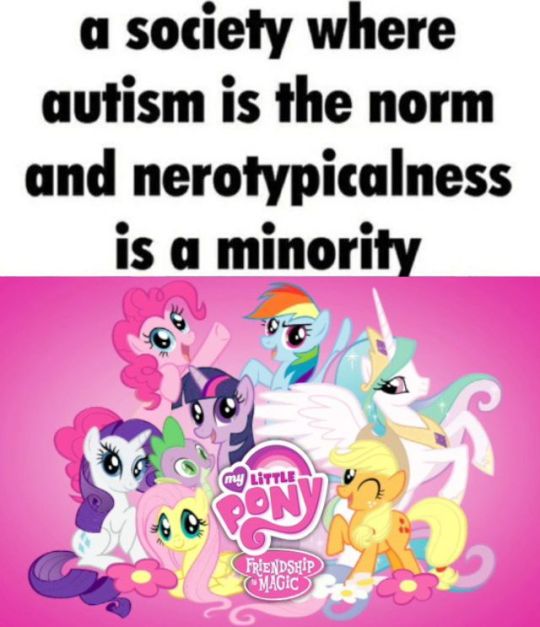
#t3rfs/r4df3ms dni#cuz i saw one reblog this#and she called me BESTIE#I'm not your fucking bestie#i have headcanons that would make your kind hurl#AND PR0SH1PP3RS GODDAMN DO I HAVE TO PUT A DNI FOR EVERYTHING FUCK OFF#i just saw the vilest shit on the recommended blogs for the last guy Jesus Christ.#one of those blogs posted flags and stuff and one if them was a fucking zoo flag#god should flood us again i think because what the fuck was that#ok uhh anyway get out if u can't keep it in ur pants around animals I guess#and children#what the fuck is wrong with people#mlp#my little pony#mlp fim#my litte pony friendship is magic#twilight sparkle#pinkie pie#rainbow dash#applejack#rarity#fluttershy#mane 6
2K notes
·
View notes
Text
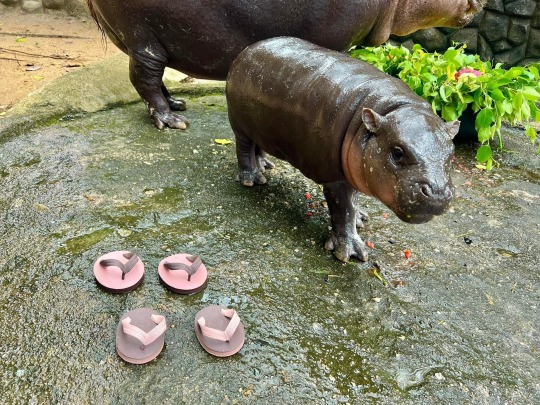
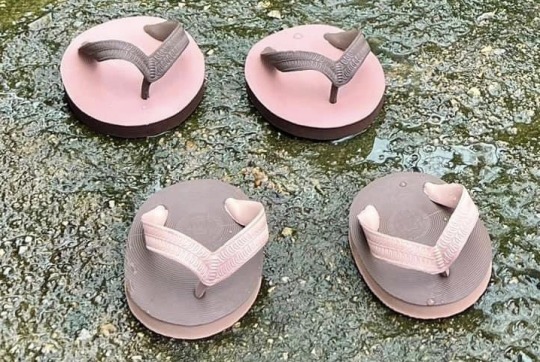
crying over the fact Moo Deng has her own little hippo shoes that match her color! ♡
© khamoo.andthegangs
please also check out this post before making any baseless claims about Moo Deng not being happy and well cared for in her home, thank you
#moo deng#thailand#khao kheow open zoo#cute#wholesome#baby animals#pygmy hippo#hippopotamus#positivity#kindness#humor#grandmacore#princesscore#meme#memes#comedy#aesthetic#nature#naturecore#funny
735 notes
·
View notes
Text


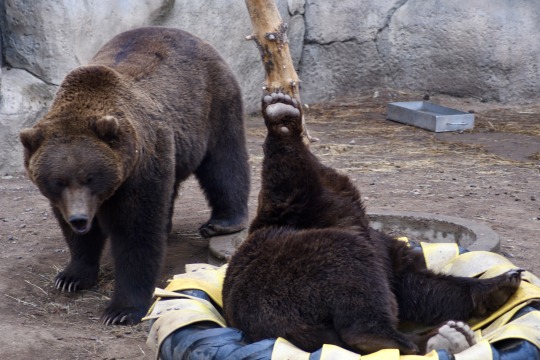

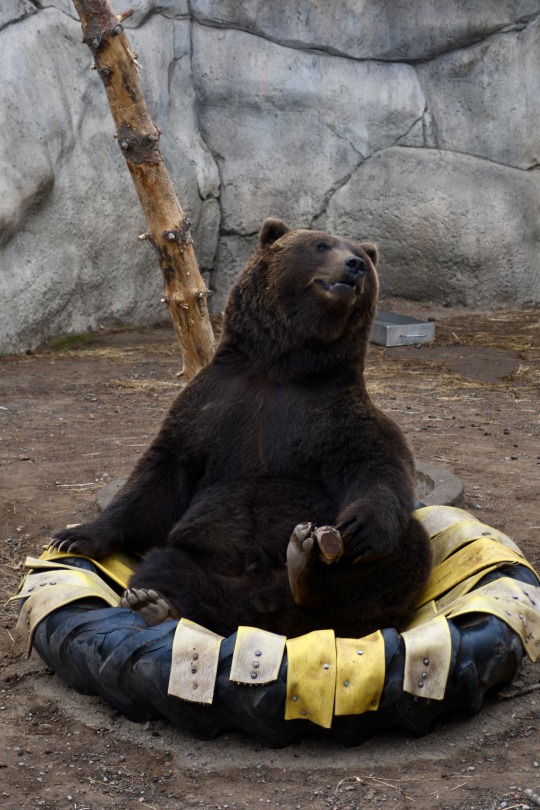

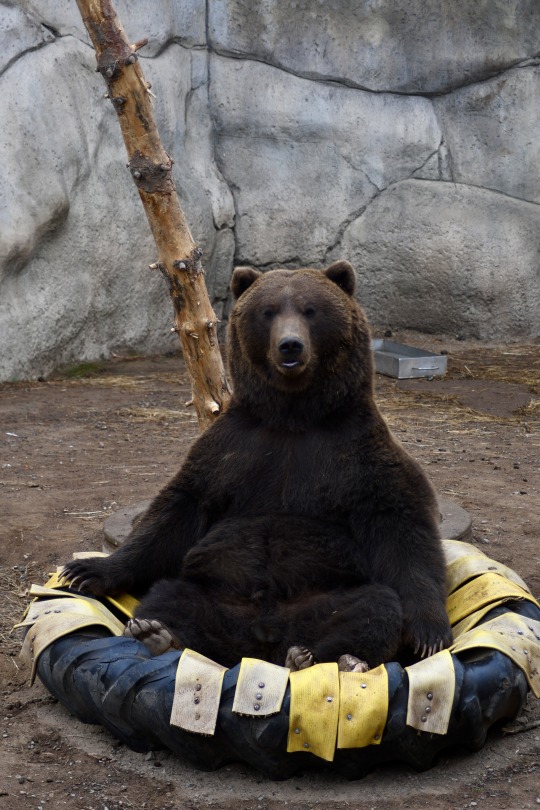
the brown bear brothers at the lake superior zoo kind of stole the show
#bears#brown bear#lake superior zoo#we accidentally went on their halloween event for kids day#but it kind of worked out because the exhibits themselves werent that crowded due to it#and also all the costumes were kind of their own exhibit
292 notes
·
View notes
Text
Round 3 - Mammalia - Peramelemorphia


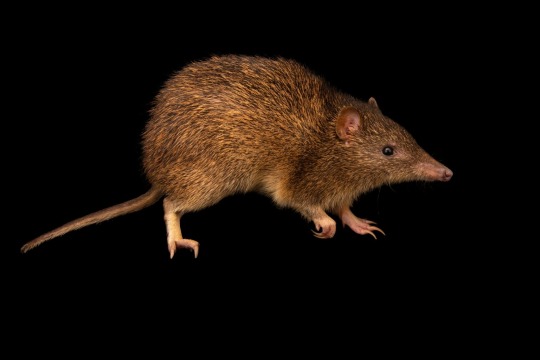

(Sources - 1, 2, 3, 4)
The marsupial order Peramelemorphia contains the living families Peramelidae (“bandicoots”) and Thylacomyidae (“Greater Bilby”).
Peramelemorphs all tend to have a characteristic shape: a round, arch-backed body with a long, delicately tapering snout, upright ears, relatively long, thin legs, and a thin tail. They range from the size of a rat to the size of a rabbit. They are omnivorous, feeding mainly on soil-dwelling invertebrates, as well as seeds, fruit, and fungi. They possess a well-developed sense of smell and eyes that are adapted for nocturnal habits. They are are generally solitary, with females taking care of their young.
Female peramelemorphs have a pouch that opens to the rear, to protect their young while they dig for insects and their larvae. The gestation period of peramelemorphs is the shortest among mammals, at just 12-14 days. As in other marsupials, peramelemorph joeys are born as tiny, relatively undeveloped neonates and must crawl their way from the vagina to the pouch to latch on to a teat, where they will complete the rest of their development. Peramelemorph growth is fast, with bandicoots setting off on their own and becoming sexually mature at just three months of age. Female bilbies reach sexual maturity at five months of age, and male bilbies become sexually mature at eight months. This allows a given female to produce more than one litter per breeding season and gives peramelemorphs an unusually high reproductive rate compared to other marsupials.
Peramelemorphs originated in the Late Oligocene. Both the oldest modern bandicoot (Peramelid) and the oldest bilby (Thylacomyid) are known from Middle Miocene fossil deposits (around 15 million years old).

Propaganda under the cut:
The name bandicoot is based on the animal’s ratlike appearance. The name comes from an English corruption of an Indian word "pandi-kokku" meaning "pig-rat".
The smallest peramelemorph is the Mouse Bandicoot (Microperoryctes murina), which is 15–17.5 cm (5.9-6.9 in) long.
The Golden Bandicoot (Isoodon auratus) is especially adapted for life in hot, semi-arid environments. It has a low body temperature that is constantly changing, making it heterothermic. This allows the internal body temperature to fluctuate in response to extreme environmental temperatures without inhibiting and denaturing necessary proteins. Additionally, its low metabolic rate correlates to less heat being produced by the body, and a low thermal conductance does not allow the animal to capture and store heat well. A highly efficient panting mechanism allows for a low rate of evaporative water loss when cooling the body, conserving precious water.
The Northern Brown Bandicoot (Isoodon macrourus) is one of relatively few native Australian ground-dwelling mammals that is able to survive in urbanized landscapes, due to their generalized diet and habitat requirements.
The Eastern Barred Bandicoot (Perameles gunnii) (image 1) is the basis for the popular videogame character Crash Bandicoot, and was selected from a number of Tasmanian mammals by creators Andy Gavin and Jason Rubin for its appeal and relative obscurity.
Described in 2014, a fossil species of Miocene bandicoot found at the Riversleigh World Heritage Area was given the genus name Crash. It was given the species names bandicoot. Because paleontologists are just Like That.
Wiped out due to predation from introduced foxes and domestic cats, as well as land-clearing for farming, the Victorian subspecies of the Eastern Barred Bandicoot (Perameles gunnii) was declared Extinct in the Wild. Thanks to 30 years of conservation efforts, breeding the bandicoots in human care and establishing fox and cat-safe sanctuaries, the mainlaind population was changed from Extinct in the Wild to Endangered in September 2021, a first for Australian conservation!
The Giant Bandicoot (Peroryctes broadbenti) (image 3) is more than twice the weight of other bandicoots and adult males of the species can attain weights well in excess of 4 kg (8.8 lb).
Unlike bandicoots, Greater Bilbies (Macrotis lagotis) (image 2 and gif) are excellent burrowers and build extensive tunnel systems with their strong forelimbs and well-developed claws. Burrows spiral down, making it hard for predators to get in. A bilby typically makes several burrows within its home range, up to about a dozen; and moves between them, using them for shelter both from predators and the heat of the day, as they are desert-dwelling animals.
Greater Bilbies are generally solitary, however, there are some cases in which they travel in pairs. Pairs usually consist of two females as the sole caregivers of their offspring.
Greater Bilbies do not need to drink water, as they retain all the moisture they need from their food.
Because rabbits are invasive in Australia, introduced by European settlers, bilbies have been popularised as an Australian alternative to the Easter Bunny. Haigh's Chocolates in Adelaide made 950,000 chocolate “Easter Bilbies” between 1993 and 2020, with proceeds donated to the Foundation for Rabbit-Free Australia, which does environmental work to protect the indigenous biodiversity of Australia.
Today, only the Greater Bilby survives and is vulnerable, but the Lesser Bilby (Macrotis leucura) is a recently extinct relative, having possibly survived into the 1960s. Its extinction was much “quieter” than that of the Thylacine, and was likely due to introductions of invasive predators like the domestic cat and red fox. Other “quiet extinctions” include that of the Desert Bandicoot (Perameles eremiana) which appears to have disappeared between about 1943 and 1960, and the Nullarbor Barred Bandicoot (Perameles papillon) which was last collected in 1928.
Today, many peramelemorph species are still threatened and endangered due to habitat fragmentation and introduced predators, as well as from competition with introduced rabbits. Areas designated to conserve vulnerable populations of bilbies and bandicoots have predator exclusion fences built around them, and must be heavily monitored for break-ins. In Currawinya National Park in Queensland, high-salinity flood waters damaged a predator exclusion fence, allowing feral cats to enter the sanctuary, wiping out all the bilbies in the park.
#animal polls#round 3#mammalia#to be ENTIRELY CLEAR because I am a conservationist and this is a conservation hot topic and it’s probably going to come up a lot#I LIKE domestic cats and I like red foxes and I like rabbits#they are all 5 star animals to me#the issue here is irresponsible owners who don’t keep their pets contained and Those Pesky Europeans who thought it’d be fun to bring#foxes and rabbits along with them wherever they colonized so they could still recreationally kill them as a little#Memory of Jolly Old England#I do not fault cats and foxes and rabbits for doing what is instinctual to them#but I do think that it is our duty to fix the damages we’ve done to ecosystems by removing these introduced animals#With As Little Cruelty As Possible#and that unfortunately has to include culling them because there are not enough homes that can take in that many feral cats and there are#not enough zoos and sanctuaries to take in that many foxes and rabbits#Alright that’s it for THAT soapbox for now but because introduced animals and specifically domestic cats have done so much#ecological damage I absolutely can not promise it’s not going to come up again#because I am gonna use these to talk about conservation issues when I get the chance#Just Be Kind and Keep Your Cats Inside
56 notes
·
View notes
Text

Stuffed or not it's breathing.
I can heal it.
#what kind of animal zoo is this lmao#sometimes i draw pathologic. as a treat#pathologic#pathologic 2#pathologic fanart#haruspex#bachelor#changelling clara#мор#мор утопия#daniil dankovsky#artemy burakh
470 notes
·
View notes
Note
On reading your post about feral peafowl, I thought you might like to know there’s a feral flock in a neighborhood in Omaha, NE. Nebraska. I’m not sure how they’re surviving the winters here, but they are.
No one’s admitting to putting them there either. The zoo has a different kind of peafowl, so they didn’t start out there.
There's feral birds in most states! Winter doesn't really bother blues, as long as they can find food and plenty of people enjoy feeding peacocks. The color mutation "Montana" actually is called that because it was plucked from a feral flock in Montana!
#peafowl#asks#i wouldn't rule out the zoo adding to the population at least#there's only three species of peafowl and only one kind allowed to roam free at zoos#the congo are not theirs to set free and the greens are too wild
31 notes
·
View notes
Text
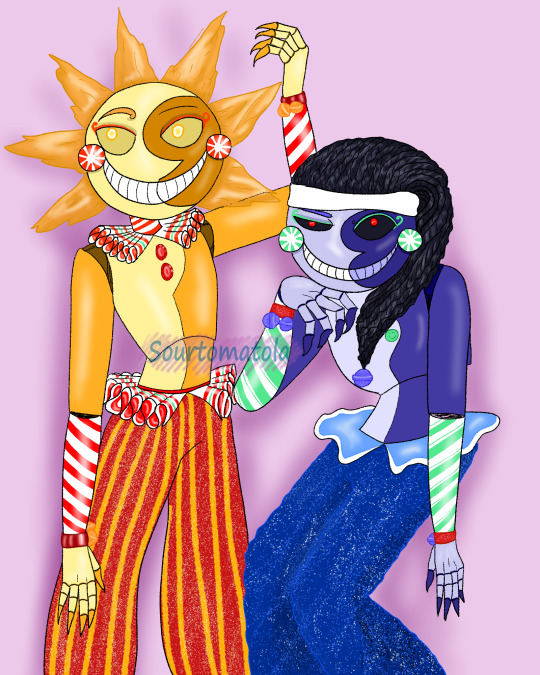

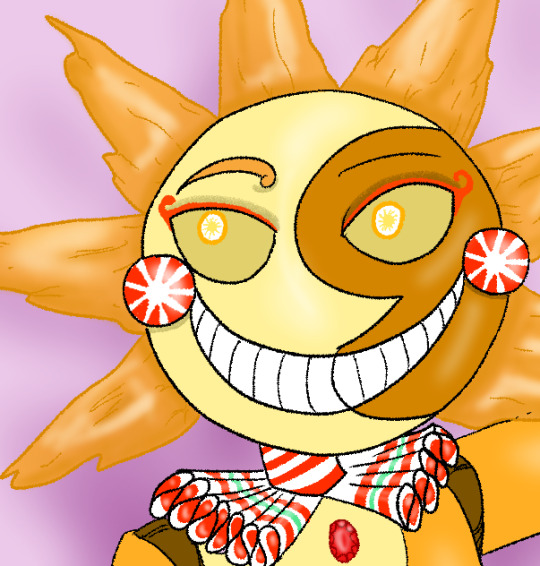
Candy factory Lore post!!
Sun:
Main flavors: Butterscotch, mint and lemon
Candy types: hard candies (particularly old fashioned candy) butterscotch glass candy ray's, strawberry bon-bon buttons, ribbon candy ruffles, Loli eyes (not lolipop, just loli) SUNNYDROP bells
Moon:
Main flavors: blue razzberry, liquorice, spearmint
Candy types: Soft candies such as black liquorice hat, creamy gummy ruffles, gumdrop buttons, M&M eyes, MOONDROP bells
Both have sour gummy pant's, mint disk cheeks, Mint neck polls, and outer shells made of hard candy.
LORE
They both live in the Fazbear confection factory, along with many other living candy beings. During the day, they pose for tourists. People can come in, to see these unique sentient candy creatures in the environment provided by the company. Almost like a candy creature Zoo.
The candy they shed have special abilities. Depending the type they drop, they could have a sleepy affect, high energy, a happy feeling, a warm feeling, a cooling feeling, ext. To regain the candy these beings shed, they are fed a pure sugar diet, and their shells will harden quickly withing a couple hours. If they were fed fruit, their shells wouldn't harden/form as fast, but the next shedding would have more nutrition.
The company owner, that good old candy magician, William Wonka* (renamed for branding purposes) introduces them and assures to have their conservational efforts at the height of the company's value. The tours often run late, more often running till about midnight.
Once all the customers have left the building, you'd think it'd be quiet. But as the candy that is shed from these being's is rare and highly valuable, they have rich and elite bidders screaming for it. High class parties aren't worth much without Fazbear candy at each desert table after all.
12 AM, is therefore, Harvest time.
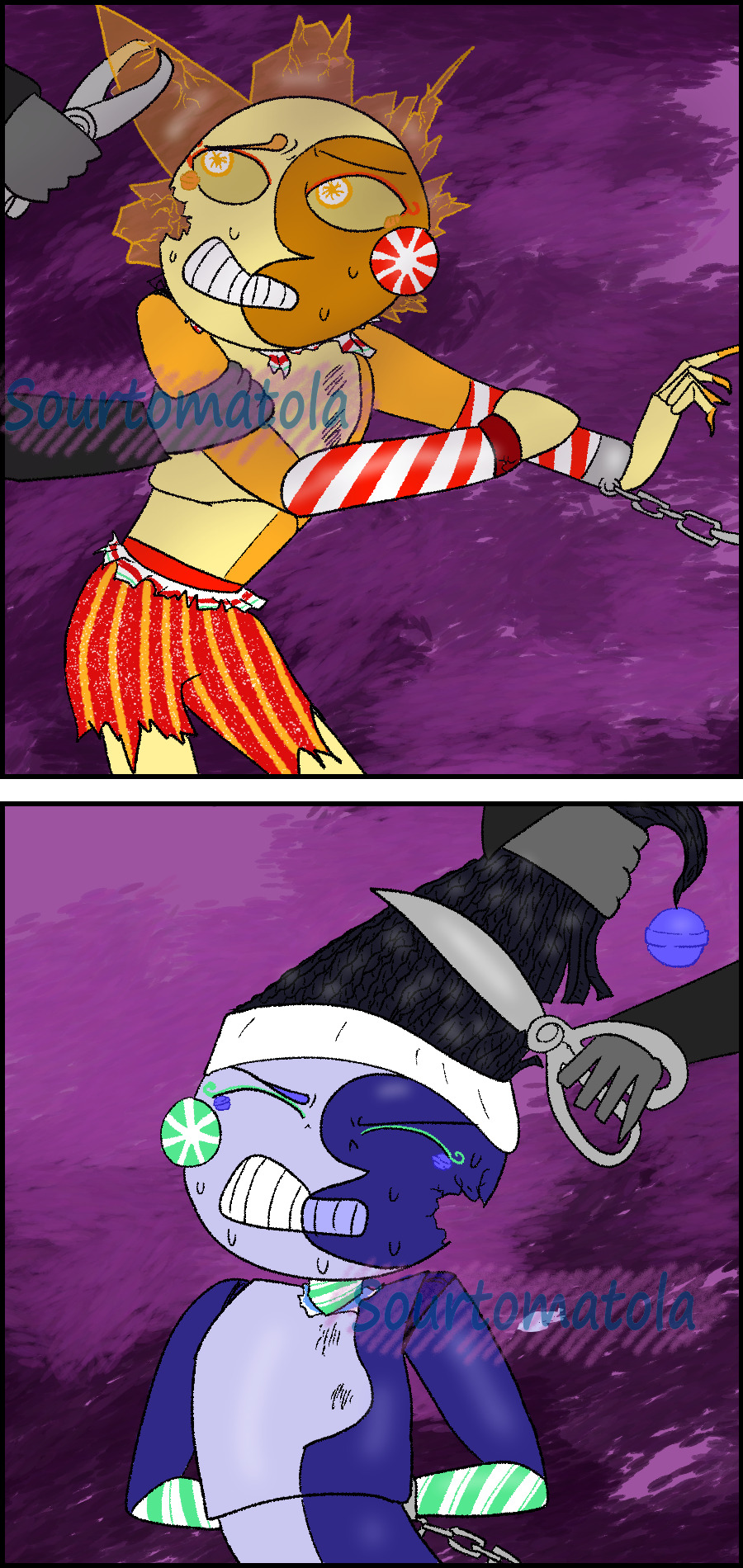
So long as their main skeletal frame is intact by the end of the harvest, they will survive and reform. What amazing resilient creatures they are!
Y/N Info
#Thinking of calling this Evil wonka factory aU#but lets be real#wonka was already kind of Evil#sentient candy au#maybe?#candy zoo au#I'll play around with the AU name#sentient candy#candy animatronics#fnaf moon#moondrop#fnaf sun#sundrop#art#my art#I had to make this au after passively coming up with it to explain why fazbear is the worst in every aU#I have a candy obsession your honor#I was so excited to do all this#when I was a kid#I was so obsessed with candy#if there were pictures of it in a book#I'd just stare at the pictures#current obsession is dutch liquorice#long post#Official name is#Taking candy for a fool
112 notes
·
View notes
Text
Post-canon itafushi were Yuuji keeps gifting Megumi pets because as much as Megumi tells him he doesn't have to, Yuuji just can't resist because he loves the way Megumi is with them: The careful, yet confident way he first approaches a new pet, his smile when the animal lets Megumi pet them for thefirst time, and just the way that, even as Megumi tells him he is going overboard with the pets and how their house isn't a zoo, he still never suggests giving them away, how he can tell Megumi instantly falls in love with every one of them.
Or maybe he doesn't just "get" him pets, maybe it starts as he finds a hurt puppy that sort of reminds him of Megumi's divine dogs, maybe he takes it home and maybe helping the puppy heal actually helps them cope with everything that has happened to them.
Maybe after that they start keeping an eye out when going out, maybe they start taking in more and more animals, in particular the "difficult" ones, the ones with missing limbs or grave conditions, with bad attitudes, the "damaged" ones. And maybe through them they learn that healing isn't trying to be the same kids they used to be, but learning to live with who they are now, to accept what they been through while also understanding that they're more that their trauma, more than the things done to them.
That there's still hope for them to be happy.
#anyways basically let itafushi's house be a fucking zoo#FULL of all kinds of animals#megumi fushiguro#jjk megumi#itadori yuuji#yuji itadori#jjk yuji#jujutsu kaisen#itafushi#itafushi thoughts
33 notes
·
View notes
Text
more godhood AU rambling
while thinking of what the trio would get up to in 1500 years and an interesting idea came to mind
so, with all the humans gone, J, N, V and the solver are the last beings around that were on Earth before it got destroyed. Also, after that generation of old drones we see in canon are gone, no one on Copper 9 accept for those 4, Khan, and maybe Nori, will remember being on a planet that isn't just snow, ice, and dead trees (till of course they get some spaceships up and running, but I digress)
now, we've already established that N brought the immortal dogs back, but who's to say he has to stop there?
idea is that N makes it a personal project to work on bringing other animals back to the planet, and that V decides to do the same with plants. So, the two work together with some worker scientists to make the planet habitable to organic live again
I'm not sure how much progress they'd be able to make in 1500 year. It's a long time, sure, but this planet has had like 5 holes punched through its core. That kind of climate disaster is gonna take some time to fix
but I like to think that, eventuality, after spending years at the manor seeing all these plants and animals in books. The two get to see them in their new home as Copper 9 heals
#murder drones#MD godhood au#in the meantime#maybe they keep a botanical garden/zoo protected by air locks to make whatever structure it's in suitable for life#filled will all kinds of flora and fauna from different planets#and as a result of all this the two “angels” after often associated with plants and animals respectively
34 notes
·
View notes
Text
i like the random zebra brays that happen in the distance in the shadow-cursed lands :)
#bg3#there's also some kind of tropical bird out there i think?#ketheric got a zoo around here somewhere#bg3 act 2
146 notes
·
View notes
Text

What kind of pharmacy company are u working hiroo?
#the miss zoo chapter#death mark#death mark shitpost#death mark meme#death mark hiroo#death mark mashita#death mark miss zoo#death mark posting#shiin#madoka hiroo#satoru mashita#miss zoo#zukawa#what kind of pharmacy company is it? rhodes island?
30 notes
·
View notes
Text
Wish I just got paid even, like, a fucking quarter for each note on a post where I'm begging for financial help.
#getting hundreds of notes but zero money kind of just makes me feel like a zoo animal or something...#prsnl
13 notes
·
View notes
Text
At a certain point of activity your post's notes risk being stripped from you entirely and effectively becoming a social space tenuously linked to its status as Your Post. There's nothing like seeing discussion or an argument (usually an argument) spiral out for weeks, with the same people returning to it each time. Congrats on your post breaking containment, it's now the third place of some people you don't know and who didn't know each other and who probably hate each other
#tumblr#the king's cross post is an example of the argument kind#but i think for a while my folger's post just had? two random people using it as a forum?#“why not block them?” are you kidding it's like watching zoo animals#i'm getting enrichment
18 notes
·
View notes
Text
liam doesn’t remember theo helping hold him back from nolan. he doesn’t remember theo repeatedly keeping him from doing something he’d regret. he doesn’t remember theo carrying him to the truck and placing him in the passenger seat. he doesn’t remember theo wiping the blood from his knuckles before starting to drive. all he remembers is waking up to theo smiling at him softer than he ever has before and doing his best to offer him comfort.
#wish i was normal an them but here we are#do yk how hard it had to have been for THEO RAEKEN to figure out how to be nice/kind without having it come off as a manipulation tactic#like 😭#the tone he takes at the zoo while asking if liam is ok and the genuine concern when he tries to offer explanations so liam wont have to#when ur trying to bare ur souls to one another but still cant admit you no longer hate each others guts#triggers car scene will remain in my mind forever like there are many layers here guys#thiam#theo raeken/liam dunbar#theo raeken x liam dunbar#theo/liam#theo x liam#6.16 triggers#teen wolf
277 notes
·
View notes